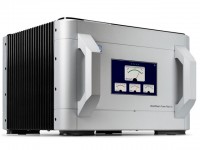I’m curious whether anyone has had any experience placing a ‘balanced“ bifilar toroidal transformer between the output duplex of a PS Audio AC regenerator (such as the P12, P15, or P20) and a source component‘s power supply.
Bifilar toroidals weigh nearly twice as much as an equivalent generic toroidal. From the website of the manufacturer of bifilar toroidal, Plitron, who supplies toroidals to Torus:
https://www.plitron.com/custom-toroidal-transformers/power-conditioning-2/
“The Balanced Power concept consists of a 1:1 isolation transformer (ie 120 VAC In/Out) with a centre tapped secondary winding. The ‘Balanced’ refers to a Bifilar wound secondary – meaning both secondary halves are wound simultaneously, turn for turn – thus each of the 60 Volt sections are mirror imaged and matched to the theoretical limit for resistance, capacitance, and inductance.”
Specifically, I’m interested in connecting a bifilar transformer (products from Equi=tech, PLiXiR, or Torus) at the PS Audio P20’s output duplex to power my two MSB Technology mono powerbases, perhaps in the future, MSB Technology transport’s powerbase. This, to reduce whatever noise there may be in the ground connection, as well as in the rest of the AC sine wave (both common-mode, as well as higher frequency noise from 1kHz upwards).
Although the P20’s claim to fame is its dynamic voltage regulation and low output impedance (ability to deliver oodles of current on demand), it‘s still extremely susceptible to noise on the AC input which easily passes through to even its supposedly “regenerated” AC outputs, and generates its own idiosyncratic wide-band high frequency noise, hence my curiosity in adding a balanced transformer...


